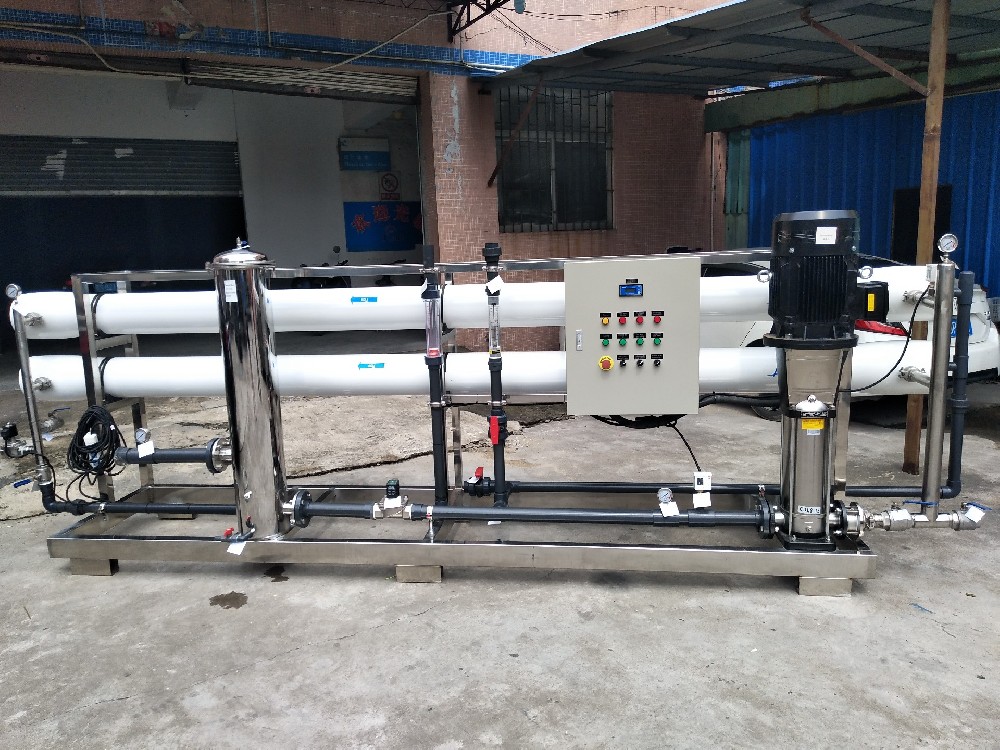
Wechat/Whatsapp:
+8613798883773

Wechat/Whatsapp:
+8613798883773
HYWATER Reverse Osmosis plant/system


Precautions about Reverse osmosis equipment Under the same conditions, if the feed water TDS of reverse osmosis equipment be different, then the operation pressure and product water quality will also be correspondingly influenced. For every 100ppm increase in feed water TDS, the operation pressure needs to increase by about 0.007MPa. The suspended solids in water refer to the substances remaining on the surface of the membrane during filtration, mainly composed of particles. Too high suspended solids content will cause the Reverse osmosis equipment be block quickly and affect the quality and quantity of product water of the system. The design recovery rate of Reverse osmosis equipment has a great influence on the pressure drop of each section. Under the condition that the total feed water flow rate remains constant, if the recovery rate increases, the total pressure drop decreases; if the recovery rate decreases, the total pressure drop increases; in actual operation, even a small change for recovery rate like 1%, will also cause a change of about 0.02MPa in the total pressure difference. When the pH value of the feed water is low, it exists in the gaseous form of CO2 in water, which is easy to pass through the reverse osmosis membrane, so the desalination rate will be lower when feed pH value is low, thus when the pH of the feed water is between 7.5 and 8.5, the desalination rate of Reverse osmosis equipment reaches the highest. To improve the operating performance of the reverse osmosis system, the following chemicals can be added to the feed water: 1. Add acid to prevent scaling Hydrochloric acid (HCl) and sulfuric acid (H2SO4) can be added to the feed water to lower the pH value. Sulfuric acid is cheap, does not corrode the surrounding metal components, and the membrane has a higher removal rate of sulfate ions than chloride ions, so sulfuric acid is more commonly used than hydrochloric acid, which may produce calcium sulfate or strontium sulfate scaling. The use of polymer scale inhibitors can prevent calcium carbonate precipitation. Industrial grade sulfuric acid without other additives is suitable for reverse osmosis. Commercial sulfuric acid has two concentration specifications: 20% and 93%. 93% sulfuric acid is also called 66 Baume degree sulfuric acid. Be careful when diluting 93% sulfuric acid. Heat can raise the temperature of the solution to 138°C. 2. Add alkali to increase the desalination rate Alkali is used less in primary reverse osmosis, and only sodium hydroxide (NaOH) is generally used, which is easy to buy and easily soluble in water. Generally, industrial grade sodium hydroxide without other additives can meet the needs. Commercial sodium hydroxide has 100% flake caustic, 20% and 50% liquid caustic soda. When adding alkali to increase the pH, it must be noted that an increase in pH will increase the LSI and decrease the solubility of calcium carbonate and iron and manganese. 3. Dechlorination agent to eliminate residual chlorine The free chlorine in the feed water must be reduced to less than 0.05ppm in order to meet the feed water requirements of the reverse osmosis equipment. There are two pretreatment methods for chlorine removal, granular activated carbon adsorption and the use of reducing agents such as sodium sulfite. Activated carbon filters are generally used in small systems (50-100gpm), and the investment cost is relatively reasonable. The benefit of carbon filters is that they remove organics that can cause membrane fouling, and are more reliable than chemical additions for all incoming water treatment. But its disadvantage is that it is easy to breed microorganisms. Sodium bisulfite (SBS) is a typical reducing agent of choice for larger RO units. Dissolve solid sodium metabisulfite in water to prepare a solution, the purity of commercial sodium metabisulfite is 97.5-99%, and the dry storage period is 6 months. SBS solution is unstable in the air and will react with oxygen, so the recommended service life of 2% solution is 3-7 days, and the service life of solution below 10% is 7-14 days. Theoretically, 1.47 ppm of SBS (or 0.70 ppm of sodium metabisulfite) can reduce 1.0 ppm of chlorine. More inquiries related to Reverse osmosis equipment please contact: Mob& Wechat& WhatsApp: (+86)13544774483 Email: sales010@water-sy.com We will provide high-quality, all-round comprehensive professional services for project consulting, system design, manufacturing, installation and commissioning, personnel training, etc
